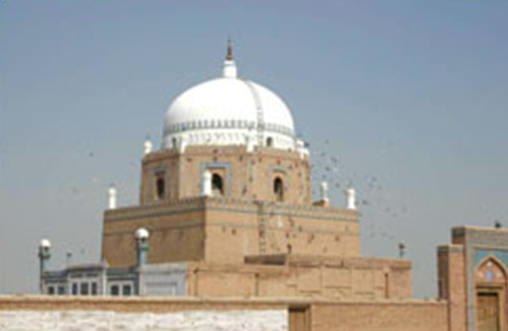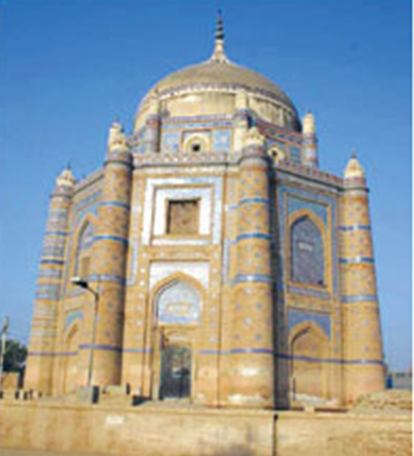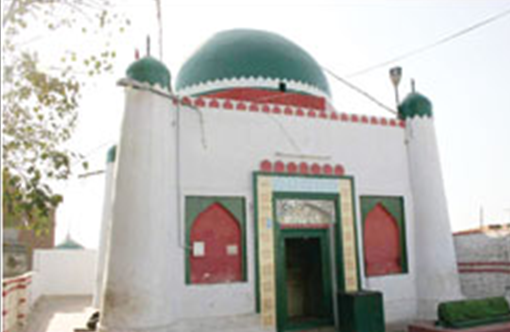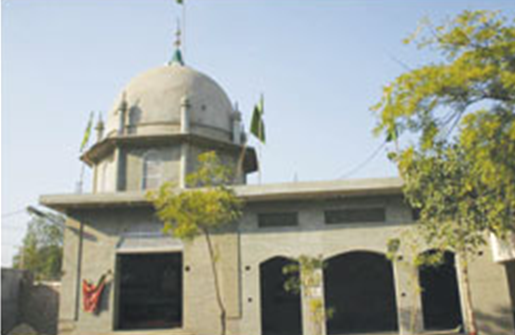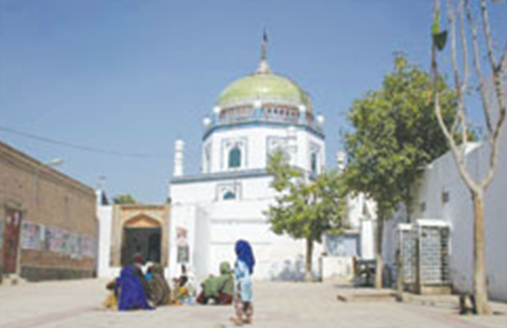Multan: A city of shrines
(Created page with " {| class="wikitable" |- |colspan="0"|<div style="font-size:100%"> This is a collection of articles archived for the excellence of their content.<br/>You can help by convertin...") |
|||
| Line 11: | Line 11: | ||
[[Category: Places |M]] | [[Category: Places |M]] | ||
[[Category:Name|Alphabet]] | [[Category:Name|Alphabet]] | ||
| − | |||
=Multan: A city of shrines= | =Multan: A city of shrines= | ||
| Line 25: | Line 24: | ||
[[File: Multan A city of shrines2.PNG| Multan A city of shrines |frame|500px]] | [[File: Multan A city of shrines2.PNG| Multan A city of shrines |frame|500px]] | ||
[[File: Multan A city of shrines3.PNG| Multan A city of shrines |frame|500px]] | [[File: Multan A city of shrines3.PNG| Multan A city of shrines |frame|500px]] | ||
| − | [[File: Multan A city of shrines4.PNG| Multan A city of shrines | | + | [[File: Multan A city of shrines4.PNG| Multan A city of shrines |frameleft500px]] |
Multan, undoubtedly one of the oldest cities of the subcontinent, has retained much of its glorious past. Alexander conquered Multan in 326BC and it is believed that while he was fighting for the city, a poisoned arrow struck him which eventually led to his death. | Multan, undoubtedly one of the oldest cities of the subcontinent, has retained much of its glorious past. Alexander conquered Multan in 326BC and it is believed that while he was fighting for the city, a poisoned arrow struck him which eventually led to his death. | ||
Revision as of 04:28, 23 October 2013
This is a collection of articles archived for the excellence of their content. Readers will be able to edit existing articles and post new articles directly |
Multan: A city of shrines
A city of shrines
By Text and photos by Shakeel Ahmed
Multan, undoubtedly one of the oldest cities of the subcontinent, has retained much of its glorious past. Alexander conquered Multan in 326BC and it is believed that while he was fighting for the city, a poisoned arrow struck him which eventually led to his death.
Multan has changed its name several times. Some of the names given to this city are Mulatana, Kasyapapura, Hansapura, Bhagapura, Sambapura, Parhladpura, Adysthana, Mulatrang, Mulatrana and Mulasthana. A Chinese traveller Hiuen Tsang visited Multan in 641AD –– at that time Multan was known as Mulasthanapura –– and in his memoirs he has named the city Mulosanpulu. Arabs gave Multan the title of ‘Madinatul Zahab’, which means the city of gold.
Muslims first arrived here in 664AD and in 721AD, Muhammad Bin Qasim entered the city. Muslim preachers and saints started coming in after the Muslim conquests and Multan subsequently became ‘Madinatul-Aulya’, the city of saints.
It is believed that Multan is the burial place of around 125,000 saints. Jamaluddin Syed Shah Yousaf Gardezi, Bahauddin Zakariya Multani, Shah Rukn-e-Alam, Shah Shams Sabzwari, Bibi Pak Daman, Hameeduddin Hakim and Pir Moj Darya are some of the prominent saints of Multan.
The city is rich in architecture and the number of beautiful mausoleums and mosques are almost unrivalled by any other city in the world. The mausoleums mostly have geometrical patterns, calligraphy, colourful floral, mosaic and glazed tile work. The shrines are constructed in two shapes, quadrilateral and simple tomb shape.
The numerous Sufi shrines in the old city offer impressive examples of workmanship and architecture. Shrines of Bahauddin Zakariya and Shah Rukn-e-Alam are located in the Multan Fort. Bahauddin Zakariya had built his mausoleum himself while that of Shah Rukn-e-Alam, grandson of Bahauddin Zakariya, was built by Ghiasuddin Tughlak. The mausoleum is built entirely of red bricks. The tomb of Shah Rukn-e-Alam has one of the biggest domes in Asia.
The shrine of Shah Shams Tabrez is built almost entirely of engraved, sky blue, glazed bricks. The shrine of Shah Yusuf Gardezi is a masterpiece of Multani style architecture. The tomb with a rectangular hall and a flat dome-less roof is quite different from the other tombs of the city.
The shrine of Sultan Ali Akbar is located in Soraj Miani and has most of the characteristics of the shrine of Shah Rukn-e-Alam. The shrine of Hafiz Muhammad Jamal is located near Aam Khas Bagh and has beautiful mosaic work.
Bibi Pak Daman was the mother of Shah Rukn-e-Alam and daughter of Sultan Jamaluddin, the emperor of Fargana. She was married to Saddaruddin, the eighth son of Bahauddin Zakariya. Her father built a beautiful palace for her and after her death was buried in its garden. The shrine of Bibi Pak Daman is an example of a quadrilateral shrine.
